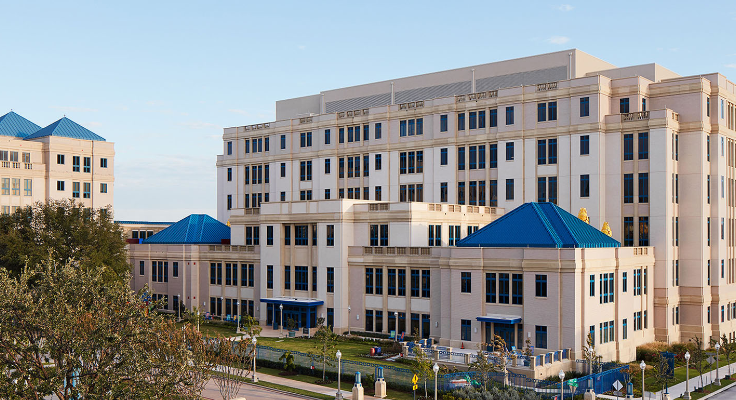We all know that the pandemic and big changes in the environment are causing businesses across all industries in the US to reassess their long-term growth strategies. There’s countless considerations companies must make on the way they operate, the relationships they invest in, and the projects they take on. And one of the biggest ways many businesses are approaching change in the construction ecosystem is by taking a closer look at the effects of total cost of ownership (TCO).
Yet the body of research that contractors, architects, engineers, and owners can draw insights from to examine and adjust their growth through total cost of ownership is far from expansive. We need more studies conducted on a wide variety of TCO tactics and the conditions and implications they have for producers, firms, and other companies trying to survive in the construction industry.
The Gap in Understanding Project Life Cycle Costs
The concept of total cost of ownership as a financial management strategy in the construction field is fairly new, first gaining traction in asset management education through Doug Christensen in the early 21st century. It stands apart from the first-cost assessments that many companies operate on and the life cycle cost (LCC) approach, which typically focuses on a single project element rather than the complete project or company portfolio. Many professionals are still unfamiliar with how they can best determine which of these unique strategies is right for their work and how it can be applied. What is the most effective way to plan for and analyze a project’s costs to achieve an owner’s objectives?
TCO examines the entire life cycle of a single structure or a system of structures, from planning to design to reuse, or whatever the end of an asset’s life will look like. Using it can power smarter financial decision-making at the start of a project and at different touchpoints throughout its conceptualization, completion, and use.
The simple fact that many industry professionals aren’t employing total cost of ownership strategies to develop building envelope and framing systems means that there’s a gap in the way they understand project life cycle costs. They don’t have the information they need to see how things fit together and make educated decisions, from multiple angles, about the bigger picture.
And this becomes a problem when designers and contractors concentrate on the immediate costs of assets or the perceived aesthetics of known options instead of the overall value that assets bring and how that contributes to what’s lost and gained at varying points in time—value like savings from greater resiliency, durability, and thermal performance.
The Importance of Collaboration in Financial Management
The way to get around this is to promote greater collaboration and cost transparency among stakeholders, pulling back the curtains on the full cost of purchasing, owning, and operating a building during its lifetime.
Predictive cost analyses cannot continue to pause at the first-cost level. Beyond planning, construction, and commission lies the cost of building operation and maintenance—things like utility replacement, interior upkeep, design improvements, and energy and safety adjustments. So although total cost of ownership is a valuable tool that may be leveraged whenever cost management is necessary, the curtain must be pulled back no later than the planning stage of a project.
This means more general contractors, engineers, and deciding parties should collaborate with product producers, truckers, and erectors, taking advantage of all project participants to tap into shared knowledge and hear valuable recommendations when assessing possible options and outcomes.
The Rising Pressure & Need for Exploratory Total Cost of Ownership Studies
June’s McKinsey report on the next normal in construction labeled rising TCO pressure as a significant source of disruption in the market moving forward. The sophistication of our customers is ever-growing, but the unrelenting pressure from infrastructure and housing to reduce costs leads building owners and their teams to seek new ways of cutting spend and fueling long-term savings. The report also revealed that customers remain focused on sustainability, energy efficiency, and performance while expressing great interest in the future of building adaptability and automation. Each of these trending topics play a part in total cost of ownership.
Concrete producers are increasingly expanding their knowledge in achieving accelerated bridge, parking structure, and building construction through the use of systems like total precast concrete. But these firms cannot be the only parties seeking information on the benefits of different systems and the considerations that make up modern total cost of ownership strategies. Especially if they aren’t being pulled into conversations on planning and design. On the other end of this relationship is the customer, who needs help understanding the application of TCO and how it can impact the long-term success of their project and business.
We need to address the lack of in-depth studies that exist on total cost of ownership to ensure building developers and owners have access to objective insights for making true data-driven decisions when choosing products, partners, and systems.
By researching, for example, the long-term performance of precast concrete, CIP, wood, and steel structures, we can learn more about what carries weight in the total cost of ownership equation. When the study results are in, they can be examined through a TCO lens to evaluate larger aspects like insurance costs. This work would influence building material specification and more, opening up more avenues for industry-wide profitability.
- Risk and cost of insurance for building types due to storm, fire, and seismic resistance
- Building occupant health and well-being due to lighting, moisture, acoustics, and temperature
- Adaptive reuse possibilities due to length of service life and overall long-term durability
From hospitals and government buildings to warehouses and parking structures. From K-12 schools and college dorms to offices and apartment complexes. Countless construction professionals stand to benefit from the information that more detailed TCO-focused research on building materials and structural, framing, and cladding systems will bring. Out of the chaos we’re navigating now can come smarter strategies for savings and growth.
Want to share your thoughts with us on total cost of ownership in the construction industry? Interested in learning more about total precast concrete? Join in the conversation by getting in touch with PCI-MA. Fill out our contact form or give us a call at 717-682-1215.





